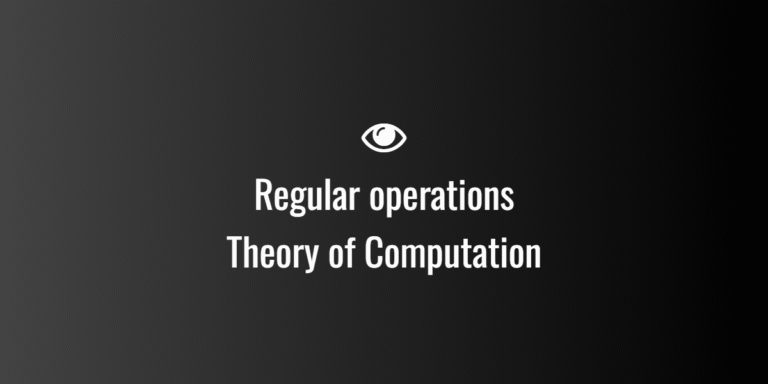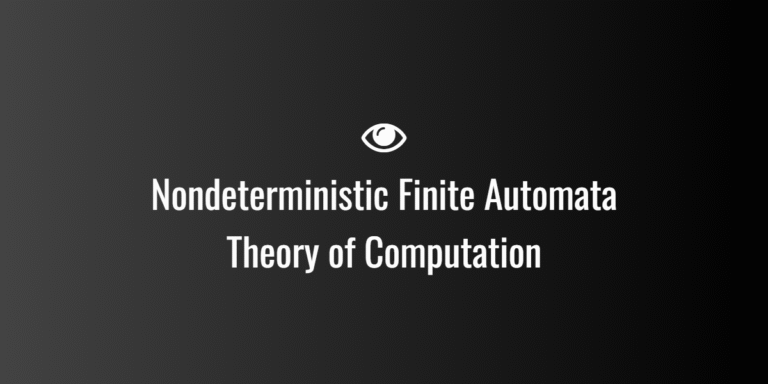
Nondeterministic Finite Automata
⭐ Why do we need NFAs?
You might ask:
“Why use something that gives multiple choices? Isn’t that confusing?”
Actually, NFAs help us:
- Design automata more easily
- Think about languages in a more flexible way
- Build DFAs later using simpler, intuitive ideas
And remember:
Even though NFAs look more powerful, they accept the exact same set of languages as DFAs — the regular languages. The advantage is simplicity, not extra power.
⭐ A simple example NFA
Let’s build a tiny NFA that accepts all strings that end with ‘a’.
In a DFA, you must create states carefully to keep track of previous symbols.
But with an NFA, we can design it in a very loose, natural way.
Here is the idea:
- From the start, you can loop on both ‘a’ and ‘b’.
- When you see an ‘a’, you may choose to jump to a final state.
- That final state means: “Yes! The string ends with ‘a’.”
⭐ Diagram of a Simple NFA
+-------+
| q0 |
+-------+
/ | \
a,b a ε
/ \ \
v v v
+-------+ +-------+
| q0 |------->| q1 |
+-------+ a +-------+
(final)Explanation of the diagram:
- q0 is the start state.
- From q0, if you read ‘a’, you can:
- Stay in q0, or
- Jump to q1, the final state.
- You can also loop on ‘b’ in q0.
- The machine accepts a string if there is any path that reaches q1 after the last symbol.
This NFA is very relaxed — the machine can be in multiple states at once, which makes the design feel light and intuitive.
⭐ How NFAs process input
Let’s say the input string is: “bba”
When the last ‘a’ appears, the NFA has two options from q0:
- Stay in q0
- Move to q1 (final)
Since one option leads to a final state,
→ The string is accepted.
⭐ Key characteristics of NFAs (in simple words)
Here are the main points, explained casually:
✔ 1. Multiple transitions allowed
For the same symbol, an NFA can jump to many next states.
✔ 2. Epsilon transitions (ε moves)
Sometimes you can move to another state without reading any symbol —
like taking a small shortcut.
✔ 3. Accepting is easy
If any one path reaches a final state, the string is accepted.
✔ 4. Simple to design
For many patterns, the NFA diagram is much easier compared to building a DFA.
✔ 5. But not more powerful
Whatever an NFA can do, a DFA can also do.
It’s just that the DFA might need more states.
⭐ Real-life analogy
Think of an NFA as a group of friends exploring a forest.
Each friend can choose a different trail.
If even one friend finds the treasure, the whole group celebrates! 🎉
That’s exactly how acceptance works in an NFA.



